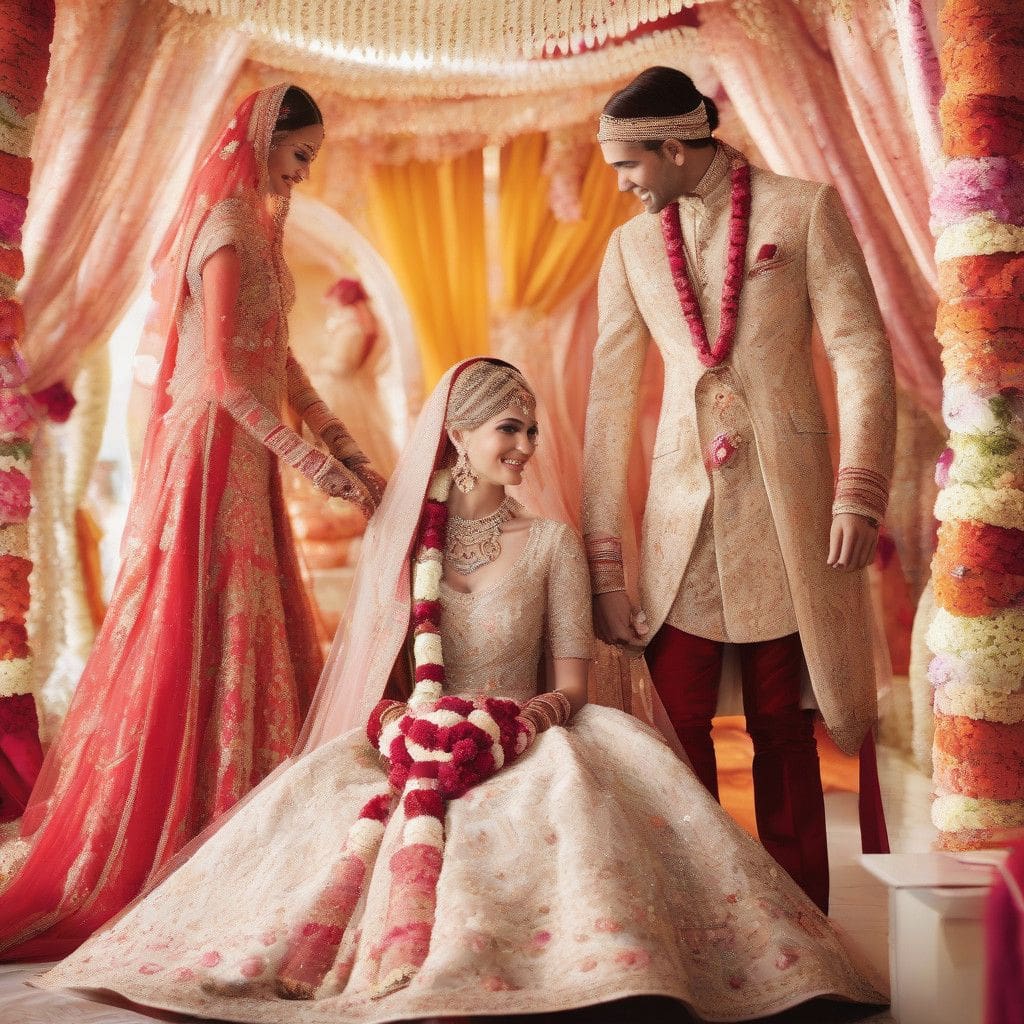India’s wedding market is a massive financial powerhouse, currently valued at a staggering $130 billion. This industry eclipses the American wedding sector and positions India as the largest wedding destination globally, with between 8 to 10 million ceremonies annually. Traditionally, local fashion designers and jewelers dominate this market, but a growing trend sees global luxury brands leveraging imaginative marketing and creative collaborations to tap into this lucrative opportunity.
A striking illustration of this trend was highlighted during the summer wedding of Anant Ambani—son of Asia’s richest man—and Radhika Merchant. Their celebration featured performances by famous pop stars and an exclusive guest list that included billionaires and celebrities dressed in extravagant couture. Such spectacles not only exemplify how Indian weddings have become spectacles of wealth but also serve as a clear invitation for global brands to capitalize on the unique cultural customs of India.
The allure of Indian weddings lies not only in their opulence but also in their multi-day celebrations filled with various events, including engagement ceremonies, sangeets, and post-wedding parties. The average expenditure for luxury weddings in India ranges from $240,000 to $360,000, and approximately 50-55% of the total wedding budget is dedicated to jewelry. This presents an immense revenue opportunity for both local and international brands.
The Changing Landscape of Wedding Fashion
In the world of wedding fashion, traditional attire like lehengas, saris, and sherwanis remains perpetually popular. However, modern Indian brides are increasingly seeking styles that allow them to express their individuality. This shift has opened the door for international brands to adapt their offerings and attract Indian consumers looking for unique pieces. For instance, influential wedding figures like stylist Anaita Shroff Adajania have noted modern brides’ desire for clothing that tells a story while allowing for mobility during longer celebrations.
The rising influence of social media, particularly Instagram, has shifted inspiration from Bollywood actresses toward the sartorial choices of real brides and international celebrities. This new perspective allows global brands to penetrate the market by aligning their collections with Indian wedding traditions that are becoming blended with international styles. For example, designer Masaba Gupta wore an Alaïa gown combined with traditional South Indian jewelry for her wedding, illustrating how the blend of cultures offers vast options in fashion choices for weddings.
Collaborations: The Way Forward
An increasing trend involves collaborations between international brands and Indian designers. For instance, Radhika Merchant’s wedding look, which was created by Indian couturier Anamika Khanna in partnership with Dolce & Gabbana, symbolizes the shift toward innovative sartorial ensembles that respect and integrate Indian tradition.
Such collaborations demonstrate that there is a growing interest from global brands to penetrate Indian culture more respectfully and creatively. Brands like Canali and Atelier Versace have made strides in this direction by adapting traditional garments like the bandhgala and lehenga into their collections, seen as a nod to the Indian market’s cultural specificity.
Moreover, brands must understand the economic landscape of this sector to tailor their offerings effectively. For example, Tod’s collaboration with Indian designer Rahul Mishra, which features intricately embroidered leather accessories, shows how global luxury brands can successfully blend heritage with contemporary tastes. By doing so, they can expand their consumer base considerably.
Opportunities in the Jewelry Sector
The wedding jewelry market presents another significant opportunity for global brands. According to Jefferies’ report, the largest portion of wedding expenditures goes toward jewelry, with families increasingly opting for heirloom pieces from reputable international houses such as Cartier, Bulgari, and Tiffany & Co. These luxury brands are beginning to localize their offerings by creating exclusive collections tailored to Indian weddings, including traditional items like the mangalsutra—a sacred necklace worn during wedding ceremonies.
Bulgari, for instance, has crafted pieces that resonate with Indian traditions while catering to a modern woman’s aesthetic sensibilities, thereby appealing to both the heritage and modernity that contemporary brides value.
Marketing Strategies for Success
Reaching wedding shoppers in India requires a multifaceted marketing approach that includes localized campaigns and participation in high-profile wedding expos. Events like Bridal Asia and The Wedding Collective have successfully brought together numerous brands, enabling them to connect directly with their target audience. This allows global brands to understand better the intricate dynamics and expectations of the Indian consumer base.
Brands must also adopt a more nuanced approach to visual advertising, where they showcase how their products fit within the Indian wedding context rather than merely presenting a Westernized image of wedding fashion. Having local influencers and stylists present in campaigns, alongside internationally recognized figures, can help bridge the gap between cultures and consumer expectations.
Conclusion
In summary, the Indian wedding market presents significant opportunities for global brands willing to adapt to cultural nuances and consumer preferences. By aligning with traditional customs, crafting locally inspired collections, and employing strategic marketing collaborations, brands can capture valuable market share within this flourishing sector. The key to success will lie in balancing global luxury standards with respect and understanding of Indian heritage and traditions.












